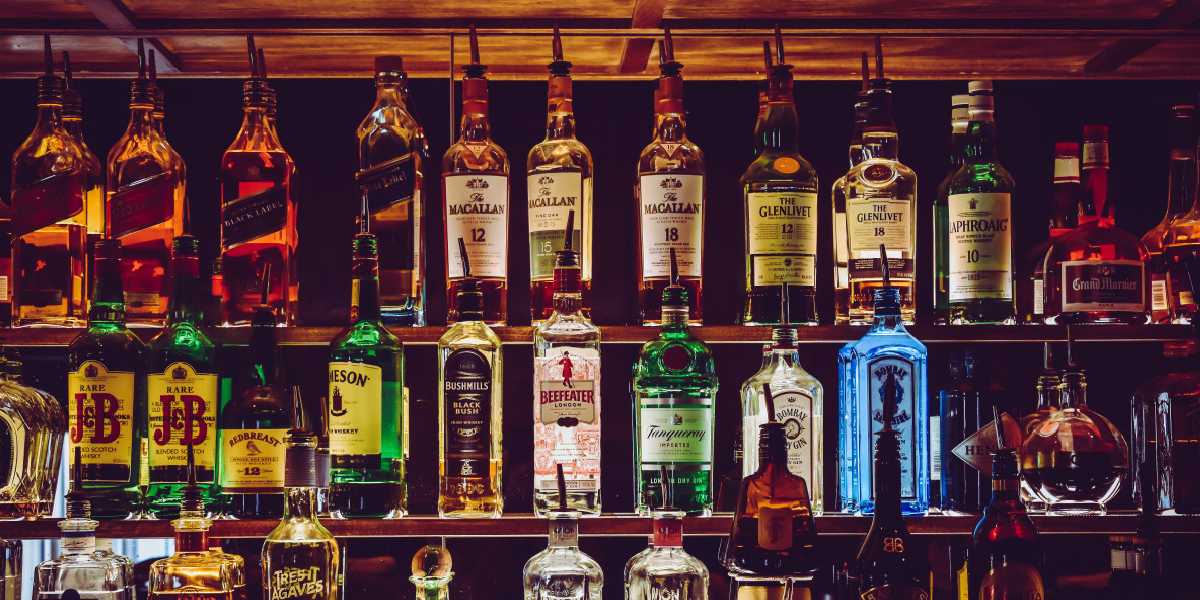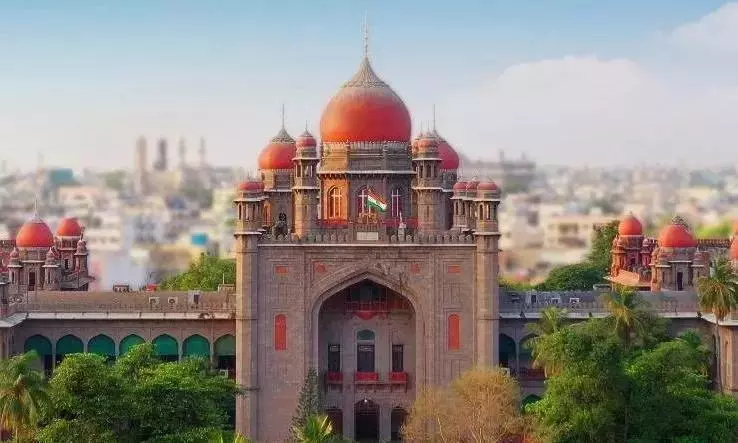Economic prosperity, cultural acceptance, and easier access are all fuelling rising alcohol and tobacco consumption in rural Telangana.

Rural Telangana spends an average of ₹3,061 per capita annually on premium alcohol products. Picture for representational purposes only. Alcohol consumption is injurious to health.
Synopsis: Telangana, like much of South India, is more developed. People have more disposable income, even in rural areas. Farmers are relatively prosperous because of free electricity, good irrigation, and the ability to grow rice three times a year. And when money comes easily, it’s more likely to be spent on non-essentials like liquor.
Rural Telangana has emerged as India’s top spender on foreign liquor and beer, with residents spending an average of ₹3,061 per capita annually on premium alcohol products.
It is also ranked fifth nationally in cigarette consumption at ₹415 per capita, according to a working paper by the National Institute of Public Finance and Policy on intoxicant consumption across Indian states for 2022-23.
The consumption pattern positioned the newly-formed state significantly ahead of other major states in premium alcohol spending, with rural areas surprisingly outpacing urban centers in this category.
Tamil Nadu is in fifth position nationally with rural expenditure of ₹1,901 per capita on foreign liquor and beer, highlighting the southern states’ preference for premium alcohol products over traditional country liquor.
However, the consumption dynamics shifted dramatically when examining cigarette usage, where urban Telangana ranked among India’s largest states with substantial per capita expenditure of ₹624 on cigarettes – nearly 2.3 times the national urban average of ₹272.
The state’s cities and towns ranked sixth nationally, with only Sikkim, Mizoram, Arunachal Pradesh, Tripura, and West Bengal recording higher urban cigarette spending.
Also Read: Even limited alcohol consumption not ‘safe’
Economic and cultural drivers
Economic prosperity, cultural acceptance, and easier access are all fuelling rising alcohol and tobacco consumption in rural Telangana, health experts opined.
“In rural Telangana, surplus income is now more common,” Dr Mukharjee Madivada, a Hyderabad-based cardiologist, told South First. “Agricultural output has been good in recent years, and various government schemes are putting money in people’s hands. On top of that, many rural families have relatives in the Gulf, so foreign remittances are coming in. All of this means that people have some spare cash, and a lot of it is going into liquor.”
Dr Sudhir Kumar, a Hyderabad-based neurologist, told South First that the pattern reflects the state’s relative prosperity.
“Telangana, like much of South India, is more developed. People have more disposable income, even in rural areas. Farmers are relatively prosperous because of free electricity, good irrigation, and the ability to grow rice three times a year. And when money comes easily, it’s more likely to be spent on non-essentials like liquor.”
Both doctors point to deep-rooted cultural norms. “Alcohol consumption is completely normalised in Telangana,” said Dr Madivada.
“If there’s a festival or a wedding, alcohol is seen as a must. It’s associated with status and celebration.” Dr Kumar noted the generational role of kallu, a traditional drink widely accepted in rural communities: “People have been drinking it for generations, so it’s easy for them to ‘graduate’ to beer, whiskey, and other liquors. During certain festivals, it’s even socially permitted for entire villages to drink together.”
Tobacco habits also have social and economic ties. “In Telangana, there are many beedi workers,” Dr Madivada explained. “People feel that saying anything against beedi-making or beedi-smoking is like attacking the livelihood of those workers. Even when the Supreme Court ordered that beedis must carry the skull-and-crossbones warning, there was resistance here. That sort of bond with bidi makers still exists.”
Policy shifts have amplified the problem. “Earlier, liquor shops were few and tucked away in corners. Now they’re in prominent locations — not just in cities but also in villages,” Dr Kumar observed. “The number of licenses has increased, making alcohol more accessible than ever. We’ve gone from government-approved ration shops selling essentials to government-approved liquor shops selling a product that causes disease, drains money, and fuels crime.”
Lifestyle changes are adding to the momentum. “Rural areas are becoming urbanised,” said Dr Madivada. “Social media is everywhere, migrant workers are returning, and people are following trends on Instagram. Cigarettes follow the same pattern as liquor and beedis — the same cultural and economic factors are driving all of them.”
Dr Kumar warned that the health burden will escalate. “I’m already seeing it. Just this morning, I treated a patient in alcohol withdrawal. It was his second admission in two months. He had liver damage, but was agitated and disoriented because his family had stopped his alcohol intake for two days. Alcohol doesn’t just damage the liver — it affects the brain and mind. We’re going to see more of these cases in the coming years.”
The urban preference for premium alcohol is even more pronounced. Urban Telangana residents spend ₹2,926 per person annually on foreign liquor and beer – the third-highest figure nationally after Sikkim (₹4,232) and Arunachal Pradesh (₹3,458), surpassing even Delhi’s ₹1,935.
Also Read: Alcohol to sleep better? Not a good idea
South’s unified premium consumption pattern
All five major South Indian states – Andhra Pradesh, Karnataka, Kerala, Tamil Nadu, and Telangana – consistently exceeded national averages in total consumption expenditure while maintaining distinctly low spending on traditional tobacco products like gutka and country liquor.
In rural areas, Kerala led the region with total per capita expenditure of ₹71,083, ranking fourth nationally and well above the all-India rural average of ₹45,277. Tamil Nadu (₹63,724), Telangana (₹57,627), Andhra Pradesh (₹58,443), and Karnataka (₹52,770) all significantly exceeded national spending patterns.
Urban consumption reinforced this trend, with urban Telangana leading southern states at ₹97,901 per capita annually, ranking fifth nationally, followed by Karnataka (₹91,990), Tamil Nadu (₹91,560), Kerala (₹84,939), and Andhra Pradesh (₹81,381).
Across southern states, Andhra Pradesh recorded significant rural foreign liquor spending of ₹1,429 per person (seventh nationally), while Karnataka spent ₹1,201 per person (eighth nationally).
Kerala, despite strict state liquor regulations, recorded rural foreign liquor spending of ₹833 and leads regional total consumption at ₹71,083 annually. Tamil Nadu’s state-controlled TASMAC system recorded rural foreign liquor spending of ₹1,901 per person (fifth nationally).
Also Read: With Coca-Cola on stage, Centre’s food policy ‘double standard’ takes fire
Northeastern states dominate cigarette consumption
While southern states topped in premium alcohol consumption, northeastern states commanded top cigarette spending across rural and urban areas. Rural Mizoram leads nationally with extraordinary ₹1,313 per capita cigarette expenditure – eleven times the national average of ₹113.
Urban cigarette consumption showed similar northeastern dominance: Sikkim (where the government is working towards making the state free of smoking) topped at ₹1,719 per capita, followed by Mizoram (₹1,514), Arunachal Pradesh (₹912), Tripura (₹804), and Meghalaya (₹775).
Among larger states, urban Haryana showed ₹441 per capita cigarette spending, while urban Karnataka and Andhra Pradesh recorded ₹491 and ₹392, respectively.
Comparison with 2011-12 NSS data revealed dramatic increases across India. Rural monthly per capita cigarette spending rose from ₹2.93 to ₹9.43, while urban areas increased from ₹7.58 to ₹22.65. Foreign liquor and beer spending surged from ₹6.86 to ₹29.17 in rural areas and from ₹8.56 to ₹49.69 in urban areas.
Bidi consumption concentrates in northern states, with rural Rajasthan leading at ₹438 per capita, followed by Haryana (₹402) and Himachal Pradesh (₹379).
Southern states ranked among the lowest nationally – Kerala (₹73), Tamil Nadu (₹97), and Telangana (₹105) all spend well below the national average of ₹138.
Gutka and tobacco leaf consumption revealed stark regional divides. Rural Madhya Pradesh led nationally at ₹792 per capita, while Kerala registered just ₹1, the lowest in the country. Tamil Nadu (₹43) and Andhra Pradesh (₹57) also ranked among the bottom five states.
Also Read: Why are Telangana women more open about alcohol consumption
Prohibition policies show a clear impact
Bihar demonstrated prohibition effectiveness, ranking last in most alcohol categories. Rural Bihar showed just ₹4 per capita foreign liquor expenditure, while urban Bihar recorded zero, indicating strict enforcement.
Gujarat showed mixed results: while alcohol consumption remained low, the state records ₹472 rural gutka spending – well above the national average of ₹327.
Country liquor consumption showed cultural patterns. Rural Chhattisgarh led nationally with ₹1,053 per capita expenditure, followed by Arunachal Pradesh (₹989) and Manipur (₹914). Southern states showed minimal consumption, with Tamil Nadu lowest nationally at ₹27 per capita rurally.
The research noted that “states such as Bihar, Chhattisgarh, Jharkhand, and Odisha, which have low annual per capita total expenditure, tended to consume more beedis, gutka, and country liquor.
Conversely, states with higher annual per capita expenditure like Sikkim, Delhi, Telangana, and Arunachal Pradesh preferred cigarettes, foreign liquor, and beer.”
Sikkim led nationally in both rural (₹92,771) and urban (₹145,261) total consumption expenditure, reflecting higher per capita income. Southern states’ consistent above-average expenditure reflected stronger economic performance compared to eastern and central Indian states, with Chhattisgarh (rural ₹29,594, urban ₹53,797) and Bihar (rural ₹40,609, urban ₹57,212) remaining well below national spending levels.
All-India averages provide regional comparison benchmarks. Rural India spent ₹138 on bidi, ₹113 on cigarettes, ₹327 on gutka, ₹313 on country liquor, and ₹486 on foreign liquor, totaling ₹45,277.
Urban areas showed higher consumption: ₹67 for beedi, ₹272 for cigarettes, ₹241 for gutka, ₹154 for country liquor, and ₹880 for foreign liquor, totaling ₹77,504 – a 71% premium over rural consumption.
Also read: Docs worried as more youth die of alcohol-related hepatitis, cirrhosis
Health crisis warning
Dr. Madivada warned of an emerging health crisis driven by lifestyle changes accompanying rising consumption.
“Now there’s easy access to food, higher oil consumption, and even fast food in rural areas. In the past, rural people were physically active, but that’s changing. Agricultural labour is now done by migrant workers from Bihar and Odisha. Many locals have moved away from hard physical work. So you have less exercise, more calorie-dense food, and then smoking and alcohol on top of that. It’s a perfect storm for heart disease and cancer. In the next one or two decades, unless we act, we will see a big increase in these diseases.”
The cardiologist also highlighted respiratory health risks: “COPD is already high in rural areas now because of smoking. Rural areas used to have lower pollution than cities, but pollution is rising, and smoking is adding to the problem. The small advantage rural people once had for asthma and COPD is disappearing. And then there are the social effects — higher rates of suicides, depression, and domestic violence. The healthcare system in rural areas is not robust enough to handle this. Most care is provided by primary health centres and informal practitioners. If disease rates rise, the already limited infrastructure will be under tremendous strain.”
Dr. Madivada provided specific examples of the problem’s scope: “I once went to a rural area to give a lecture on heart disease. I asked the students how many of them had fathers who smoked. More than one-third of the class raised their hands. That showed how rampant smoking is.”
On solutions, he emphasised cultural change: “We have to educate people that smoking and alcohol are not ‘cool’. That image needs to go. We need stricter licensing in rural areas, shorter hours for alcohol sales, and real enforcement of age restrictions. Community involvement is key — village heads, local political representatives — they need to be taken into confidence. We must tell them it’s not mandatory to serve liquor or promote smoking during festivals and celebrations. The cultural norms have to change.”
He felt that religious leaders could play a significant role: “This is not about one religion — in Telangana, across communities, alcohol is embedded in celebrations. Religious leaders can help explain why it’s harmful and what will happen if we don’t change course. They can help people understand that festivals and weddings can be joyful without alcohol or smoking.”
Meanwhile, the research emphasised that “consumption of intoxicants is associated with negative externalities to society in terms of morbidity and mortality” and “undermines the national objective of poverty alleviation for individuals already at the lower end of the socioeconomic strata.”
Analysis of these consumption patterns across states and urban-rural divides helps identify high-risk groups and regions, while compositional changes indicate the effectiveness of existing taxation policies and regulations, the study said.
(Edited by Majnu Babu).









